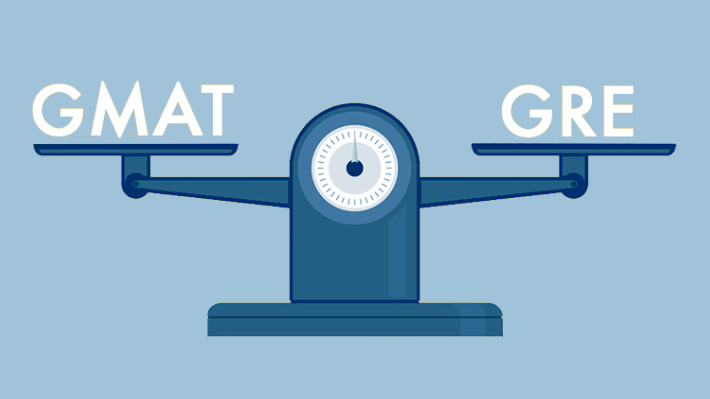Table of Contents
ToggleThe GMAT Reading Comprehension or RC sub-section of the Verbal section can be daunting at the first glance. As the name suggests, this part examines your ability to comprehend a passage on a micro and macro level. The RC passage is often wordy, dense, and ripe with jargon, filling the already tensed GMAT-takers with dread. But if you want to address this dread, read this post as we have all the strategies that you may need for GMAT reading comprehension.
Contents:
- GMAT Reading Comprehension: An Overview
- GMAT Reading Comprehension Format on GMAT
- What does the GMAT Reading Comprehension Test
- GMAT Reading Comprehension Question Types
- Should You Read the Passage or Questions First?
- Reading Comprehension: Top 5 Tips for Reading the Passage
- GMAT Reading Comprehension Strategies
- GMAT Reading Comprehension Mistakes to Avoid
GMAT Reading Comprehension: An Overview
There are about 3-4 passages in GMAT RC, each with 3-4 multiple-choice questions associated with it. Consequently, a total of 9-16 questions amount to almost a third of verbal questions. The RC consists of 3 ‘short’ passages consisting of 200-250 words with 3 questions and 1 ‘long’ passage of about 300-350 words with 4 questions. Alternatively, you may get 2 of each type. These write-ups are extracted from journals, periodicals, textbooks, or scholarly articles, and based on social science, humanities, and business.
An important point to note here is that no outside knowledge is required in this section. Any information needed to answer the questions is present in the passage.
GMAT Reading Comprehension Format on GMAT
The GMAT uses a split-screen for RC questions. The passage is given on the left side of the screen and the questions associated with it are shown one by one on the right side. Thus, while the passage is always visible, only one question is shown to the candidate at any given time. Like any other GMAT section, once you select your answer, you cannot go back to the previous question.
What Does GMAT Reading Comprehension Test?
The reading comprehension questions on the GMAT gauge your capacity to grasp, analyze, and apply that understanding in written form. In other words, you must understand the passage, its words, tone, and style and identify logical relationships between ideas and concepts to draw conclusions.
GMAT Reading Comprehension Question Types
- Main idea questions: Such questions require you to identify the overall purpose of the passage or summarize it. The key to choosing the correct answer is to truly understand the focal idea of the passage since the answer choice will not use the exact phrases or language given in the passage. The purpose of the question is to understand if you are able to recognize the passage at a macro level.
- Supporting ideas or details: These are the easiest questions to answer since they ask for detail or a piece of information explicitly stated in the passage.
- Inference: Inference questions test your ability to comprehend what is the author implying without necessarily explicitly stating it in the passage. Read between the lines as you peruse the text to answer these questions.
- Parallel situations: There are some questions that ask you if the author would agree with something in a parallel situation based on the passage. This tests your overall understanding of the author’s mindset.
- Structure and argument: In these questions, you have to identify the structure used in the passage and its function – does it explicate an idea, compare and contrast, or refute a hypothesis? You may also be asked about the strengths and weaknesses of the argument, its underlying assumptions, counter-arguments, and how the author sets out to convince the reader
- Tone: Such questions ask you to deduce the author’s attitude toward the idea – is he/she critical or supportive of the content, etc. Is the passage about a hypothesis being discussed by the author or is he/she discussing their own arguments on a topic.

Should You Read The Passage First or The Question?
Opinions are divided regarding reading the passage or question first. Some GMAT trainers and articles suggest reading the question first and reading the passage to look for its answer specifically, while others advise candidates to read the passage first.
So what should you do? Read the passage first.
Think about it, if you were to read the questions first, you would be skimming for answers after every question. With questions appearing on the right side of the screen one by one, you would have to read the passage multiple times. On the other hand, if you carefully read the passage before answering questions, you would have to read the write-up just once, thus saving you considerable time.
Reading Comprehension: Top 5 Tips for Reading the Passage
- Build a mental map while reading the passage.
- Summarize each paragraph in your mind or take mental notes – whatever helps you remember the passage well after a single reading.
- Assess the style, tone, usage of words, and examples after every paragraph. This will help you understand if there are consistencies across expressions and tone or subtle changes in them with each paragraph.
- Follow this strategy consistently and you will soon notice yourself getting better and faster at critical reading and spotting the nuances and traps embedded in the text.
- Develop a habit of reading business journals and magazines.
GMAT Reading Comprehension Strategies
- Pace yourself: GMAT Reading Comprehension questions take the longest time in Verbal for obvious reasons. For you to be able to read the passage properly, you need an effective pacing strategy that allows you to complete the rest of the verbal questions on time. Ideally, spend up to 6 minutes on short passages with three questions and 8 minutes on the long passage with four questions. This includes 2-3 minutes for initial reading and questions, giving some extra time for referring back to the passage.
- Always keep note of the main idea. Whether or not the questions ask for it, identify the central idea and reason behind each passage for clarity.
- Stay interested: It is very easy for our minds to wander off when faced with a wordy, often boring passage. The key is to give our mind a reason to stay engaged – think about what are you getting to learn through reading this, about the unique opinions of the author, or think if you can critique the author himself. Afterall, if you get bored of the passage and stay disinterested, how will you remember it?
- Lookout for transition words: Transition words help you understand the relationship between the ideas, assumptions, and arguments being made in the text. Watch out for words such as but, however, nevertheless, still, although, etc. Transition words such as consequently, thus, hence, therefore, etc. suggest a cause and effect relationship. Words such as similarly, furthermore, and additionally expound the same argument whereas words such as for instance, for example, etc. illustrate further examples. Contrast is highlighted by words such as however, yet, on the other hand, nevertheless, etc. While you may be aware of their meanings, transition words are very easy to miss. A sharp eye on these words ensures that you understand the author’s chain of thought as well as are quick to comprehend a passage that is loaded with jargon. Here is a great list of transition words for you.
- Vocabulary matters: It is not important for you to know every word under the sun, but unless you know the meaning of words in the passage, you will struggle with grasping the meaning. Proficiency in vocabulary is always helpful in RC, but in case you do not know the meaning of a word, use the tone and style of the passage to guide you.
- Follow the process of elimination: The correct answer would be one that is hardest to disprove based on the given information. But even if you are 100% sure of your answer, briefly go through the other options and make sure they can be easily discounted before selecting an answer.
Think Verbal 51/51 is Impossible?

GMAT Reading Comprehension Mistakes to Avoid
- Skimming the passage: A superficial reading of the passage will not lead you anywhere. As mentioned before, GMAT Reading Comprehension requires a thorough understanding. Rushing through will either lead you to continuously go back to the passage and waste time or choose incorrect answers.
- Not recognizing multiple viewpoints: Often passages contain multiple viewpoints as a trap for students. Not identifying which parts are the author’s opinions, where he is critiquing another viewpoint, or if there are multiple opinions in the passage which the author is discussing will land you into trouble. Often students fail to answer accurately when required to distinguish or compare the viewpoints presented.
- Bringing outside information or your own bias: Whatever information is needed to answer the question is already present in the passage. Do not base your reasoning on the knowledge that you may already have or insert your own bias in the process of elimination. Remember the correct answer is the one that is supported by the passage alone.
- Getting distracted by the jargon: One of the smart ways of getting students to pick the incorrect answers is to make the passage so jargon-heavy that they are unable to critically read the text. Most students mistakenly focus on the facts and the dry details. However, that is not the point of the passage. You need to analyze why certain sentences are placed where they are, what is the purpose of the author, and the essence of the passage.
- Reading just the first and last sentence of a paragraph: Many GMAT trainers, articles, and forums recommend reading only the first and last line of each paragraph. That is plain absurd. Think about it – why would an author write important points only in those two lines and fill the paragraph with irrelevant information? Why would the examiner choose the passage if the writing was that inconsistent or poor? Skipping portions of the text will most likely lead you to a skewed understanding of the passage.
- Trap words: Often a passage may spend a couple of sentences on a point only to negate it with transition words such as however or but. These function as traps for those who merely skim through or follow the approach given above.
Conclusion
We hope these strategies help you get all your questions answered accurately for the RC section on the GMAT. However, any strategy you choose should be implemented and tested during the practice sessions. Do not experiment on the day of the exam.
To perform your best, you need to arrive at answers within 2 minutes. Learn more about pacing strategies in Mastering GMAT Pacing Strategy for 740+ Score





